Part Twenty Seven. Because Puerto Rico’s death toll from 2017’s Hurricane is a metric of economic development, newspapers pressured to up the numbers. For the readers’ convenience, this column of DEC. 9, 2017 is a sample of that pressure.
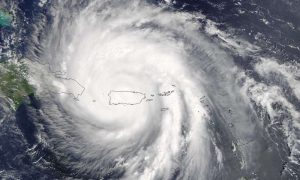 UTopiAH. 64 death certificates or 2,975 survey? This is Part 27 of a series for comparing life expectancy, because death rates are the new metric of economic development. Included are medical conditions ranking Utah’s #1 for health. When nose counts don’t give the answer wanted, the pressure is to turn to surveys. Where should a named memorial be built listing names from the Puerto Rico Hurricane?
UTopiAH. 64 death certificates or 2,975 survey? This is Part 27 of a series for comparing life expectancy, because death rates are the new metric of economic development. Included are medical conditions ranking Utah’s #1 for health. When nose counts don’t give the answer wanted, the pressure is to turn to surveys. Where should a named memorial be built listing names from the Puerto Rico Hurricane?
- Part Twenty Seven. Because Puerto Rico’s death toll from 2017’s Hurricane is a metric of economic development, newspapers pressured to up the numbers. For the readers’ convenience, this column of 9, 2017 is a sample of that pressure.
Backstory. In September 2017, two Hurricanes moved, hit, drowned over Puerto Rico. Storms, disasters, commotion bring eyes to the  media, boosting ratings. The worse the disaster the better the coverage. Hurricanes destroy by a sea surge, flying debris, and tornadoes. Being warned, the Puerto Ricans population of just under four and a half million sought shelter. Power was lost, homes destroyed, roads blocked. In the weeks afterward, physicians certified 64 storm deaths caused by the storms sea surge, drowning and being struck by wind debris. Each death certificate was completed by a coroner, with name, gender, description, date, and cause of death. In 2015 28,085 deaths in Puerto Rico were reported on death certificates. See Part 25 for the breakdown of causes in 2015. Unsatisfied, hoping or expecting more deaths, media demanded and pushed for an increase in storm deaths count. In response to the political pressure, the government of Puerto Rico ordered a fresh report. Over the next year, in order to increase the count, the definition for Puerto Rican storm deaths were broadened beyond wind and water, to include suicides, sepsis, dialysis, diabetes, heart attack, and medicine. Of necessity, Puerto Rico’s coroners were declared incompetent to complete death certificates. Also, rather than use the newly incompetent death certificates, each with a deceased’s name, new statistical surveys were used by sampling one in six hundred households, and then multiplying the results by six hundred. No individual names, individual genders or causes, but a new an higher count. The 2018 statistical survey listed storm deaths at 2,975, an accuracy not supported by significant numbers in the survey. The conclusion noted that deaths are a metric of economic activity, and that the increase in storm deaths was due, not to drowning or debris striking, but to failure of the health system, missing doctors, missing ambulances, missing electrical and utility grid. The missing doctors were not due to a failure of the emergency response, but to generations of failure to train doctors, restrictions on medical school seats. Note no one complained about an absence of lawyers, because law schools annually graduate three times the lawyers as medical schools graduate physicians. Likewise no mention regrets a shortage of insurance salesmen, car dealers, handy-men, or other vocations, just health care.
media, boosting ratings. The worse the disaster the better the coverage. Hurricanes destroy by a sea surge, flying debris, and tornadoes. Being warned, the Puerto Ricans population of just under four and a half million sought shelter. Power was lost, homes destroyed, roads blocked. In the weeks afterward, physicians certified 64 storm deaths caused by the storms sea surge, drowning and being struck by wind debris. Each death certificate was completed by a coroner, with name, gender, description, date, and cause of death. In 2015 28,085 deaths in Puerto Rico were reported on death certificates. See Part 25 for the breakdown of causes in 2015. Unsatisfied, hoping or expecting more deaths, media demanded and pushed for an increase in storm deaths count. In response to the political pressure, the government of Puerto Rico ordered a fresh report. Over the next year, in order to increase the count, the definition for Puerto Rican storm deaths were broadened beyond wind and water, to include suicides, sepsis, dialysis, diabetes, heart attack, and medicine. Of necessity, Puerto Rico’s coroners were declared incompetent to complete death certificates. Also, rather than use the newly incompetent death certificates, each with a deceased’s name, new statistical surveys were used by sampling one in six hundred households, and then multiplying the results by six hundred. No individual names, individual genders or causes, but a new an higher count. The 2018 statistical survey listed storm deaths at 2,975, an accuracy not supported by significant numbers in the survey. The conclusion noted that deaths are a metric of economic activity, and that the increase in storm deaths was due, not to drowning or debris striking, but to failure of the health system, missing doctors, missing ambulances, missing electrical and utility grid. The missing doctors were not due to a failure of the emergency response, but to generations of failure to train doctors, restrictions on medical school seats. Note no one complained about an absence of lawyers, because law schools annually graduate three times the lawyers as medical schools graduate physicians. Likewise no mention regrets a shortage of insurance salesmen, car dealers, handy-men, or other vocations, just health care.
- https://www.nytimes.com/interactive/2017/12/08/us/puerto-rico-hurricane-maria-death-toll.html
- Note: Chart shows the cumulative number of deaths in 2017 compared with an average of the number of deaths in 2015 and 2016. A decrease in deaths occurs on some dates because the number in 2017 was fewer than in previous years.The New York Times | Source: Demographic Registry of Puerto Rico (deaths in September and October as of Dec. 5)
- Official Toll in Puerto Rico: 64.
Actual Deaths May Be 1,052. - By FRANCES ROBLES, KENAN DAVIS, SHERI FINKand SARAH ALMUKHTAR UPDATED 10:43 AM ET, DEC. 9, 2017
 Dec. 9, 2018:The government of Puerto Rico has acknowledged that more than 1,400 people died in the aftermath of Hurricane Maria.
Dec. 9, 2018:The government of Puerto Rico has acknowledged that more than 1,400 people died in the aftermath of Hurricane Maria.- Homes were flattened. Power was knocked out. And all across Puerto Rico, bodies began showing up at morgues.
- Hurricane Maria pummeled Puerto Rico with great fury but the government there has reported an official death toll far lower than the devastation suggests.
- A review by The New York Times of daily mortality data from Puerto Rico’s vital statistics bureau indicates a significantly higher death toll after the hurricane than the government there has acknowledged.
- The Times’s analysis found that in the 42 days after Hurricane Maria made landfall on Sept. 20 as a Category 4 storm, 1,052 more people than usual died across the island. The analysis compared the number of deaths for each day in 2017 with the average of the number of deaths for the same days in 2015 and 2016.
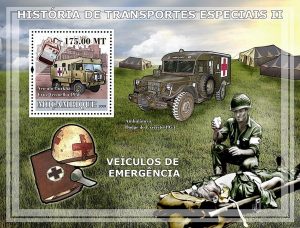 Officially, just 64 people died as a result of the storm that ravaged the island with nearly 150-mile-an-hour winds, cutting off power to 3.4 million Puerto Ricans. The last two fatalities were added to the death toll on Dec. 9.
Officially, just 64 people died as a result of the storm that ravaged the island with nearly 150-mile-an-hour winds, cutting off power to 3.4 million Puerto Ricans. The last two fatalities were added to the death toll on Dec. 9.- “Before the hurricane, I had an average of 82 deaths daily. That changes from Sept. 20 to 30th. Now I have an average of 118 deaths daily,” Wanda Llovet, the director of the Demographic Registry in Puerto Rico, said in a mid-November interview. Since then, she said on Thursday, both
- figures have increased by one.
- Data for October are not yet complete, and the number of deaths recorded in that month is expected to rise. Record-keeping has been delayed because Puerto Rico’s power grid is operating at less than 70 percent of its capacity and swaths of the island still do not have power.
- Average Daily Deaths in September and October
- Hurricane Maria makes landfall.
- 100 deaths per day
- 2017 2015 2016
- 50
- 7 Sept. 20 Oct. 3 Oct. 17 Oct. 31
- Note: Chart shows a five-day moving average.The New York Times | Source: Demographic Registry of Puerto Rico (deaths in September and October as of Dec. 5)
- The deadliest day was Sept. 25, the day the governor of Puerto Rico, Ricardo A. Rosselló, warned that a looming humanitarian crisis could prompt a mass exodus from the island.
- President Trump responded that night bytaking to Twitter to say the island had to deal with its massive debt: “Food, water and medical are top priorities – and doing well. #FEMA.”
- It wasover 90 degrees, and power was out on most of the island, even in most hospitals. Bedridden people were having trouble getting medical treatment, and dialysis clinics were operating with generators and limiting treatment hours. People on respirators lacked electricity to power the machines.
- On that day, 135 people died in Puerto Rico. By comparison, 75 people died on that day in 2016 and 60 died in 2015.
- One local mayor went to the Federal Emergency Management Agency command post that day andshouted for help. Statistics show his city, Manatí, had among the highest mortality rates in September.
- Places where there were more deaths in Sept. 2017 than in Sept. 2015
- Aguadilla Manata
- With communications down throughout the island and bodies piling up in hospital morgues, the government was still clinging to its early death count estimate of 16.
- On Sept. 29, Héctor M. Pesquera, Puerto Rico’s public safety secretary, said in an interview that the death count would not swell by much.
- “Will it go up? I am pretty sure it will go up,” he said. “It won’t double or triple. It’s not like an earthquake where you have a building and you don’t know whether there were 20 in the building or 300 in the building until you get all the rubble out.”
- The day he said that, 127 people died, 57 more than the year before.
- On Oct. 3, nearly two weeks after the storm, Mr. Trump visited the island and praised the low official death toll. Hereferred to the 1,833 deaths in 2005 during Hurricane Katrina as a “real catastrophe.”
- “Sixteen people certified,” Mr. Trump said. “Sixteen people versus in the thousands. You can be very proud of all of your people and all of our people working together.”
- By that visit, an additional 556 people had died in Puerto Rico compared with the same period over the two prior years.
- The Times estimates that in the three weeks after the storm, the toll was 739 deaths. If all those additional deaths were to be counted as related to the hurricane, it would make Maria the 6th deadliest hurricane since 1851.
- The method used to count official storm deaths varies by state and locality. In some parts of the United States, medical examiners include only direct deaths, such as those caused by drowning in floodwaters. In Puerto Rico, however, Mr. Pesquera said, the medical examiner includes deaths caused indirectly by storms, such as
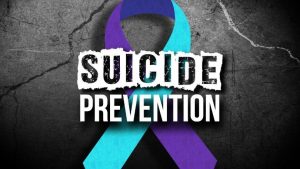 suicides. That is why the gap between the official death toll and the hundreds of additional deaths is so striking.
suicides. That is why the gap between the official death toll and the hundreds of additional deaths is so striking. - A study, which has not been peer-reviewed, by a Pennsylvania State University professor and an independent researcher estimated that the death toll could be 10 times higher than the government’s official count.
- The Center for Investigative Journalism published its own estimate on Thursday, finding that nearly 1,000 more people than usual died in the months of September and October.
- Records from Puerto Rico’s government show that some of the leading causes of death in September were diabetes and Alzheimer’s disease,
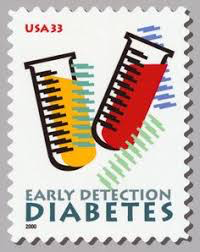 although the causes of death are still pending for 313 of the September deaths. The number of diabetes deaths was 24 percent higher than it was last year — and 39 percent higher than it was in 2015.
although the causes of death are still pending for 313 of the September deaths. The number of diabetes deaths was 24 percent higher than it was last year — and 39 percent higher than it was in 2015. - But the highest surge was in deaths from sepsis — a complication of severe infection — which jumped 50 percent over last year. That change is notable and could be explained by delayed medical treatment or poor conditions in homes and hospitals.
- Pneumonia and emphysema deaths also saw spikes.
| Causes of death | Sept. 2015 | Sept. 2016 | Sept. 2017 | Pct. change |
| Sepsis | 64 | 61 | 92 | +47 |
| Pneumonia | 50 | 55 | 76 | +45 |
| Emphysema and other breathing disorders | 104 | 114 | 156 | +43 |
| Diabetes | 221 | 249 | 309 | +31 |
| Alzheimer’s and Parkinson’s | 189 | 183 | 229 | +23 |
 The New York Times | Source: Demographic Registry of Puerto Rico, Health Department of Puerto Rico (causes of death as of Dec. 4) | Note: Percentage change is the number of deaths in Sept. 2017 compared with the average of the number of deaths in Sept. 2015 and Sept. 2016.
The New York Times | Source: Demographic Registry of Puerto Rico, Health Department of Puerto Rico (causes of death as of Dec. 4) | Note: Percentage change is the number of deaths in Sept. 2017 compared with the average of the number of deaths in Sept. 2015 and Sept. 2016.- For weeks, Puerto Rico’s Department of Public Safety insisted that the surge was coincidental: Government officials believed hundreds of additional people had died of natural causes. But the news media continued to investigate — CNN surveyed half the island’s funeral homes to come up with an additional 499 deaths the funeral directors believed were related to the storm.
- Under pressure, the government called for morticians and family members to come forward with more information, and it says its forensic science office is reviewing cases.
- As more instances have come to light of deaths because of power failures at local hospitals, or oxygen tanks that ran out, the government has said that it is willing to revise the death count upward.
- “What we said is, ‘Give us the information,’ ” the governor, Mr. Rosselló, told The Times.
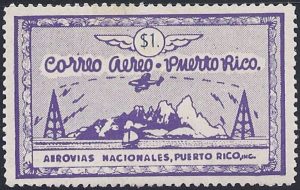 Robert Anderson, chief of the mortality statistics branch of the National Center for Health Statistics, said Puerto Rico’s
Robert Anderson, chief of the mortality statistics branch of the National Center for Health Statistics, said Puerto Rico’s- spike in deaths is statistically significant and unlikely to be the result of an unlucky fluke. Not even a bad flu season would make the mortality rate increase that much, he said.
- “I think there’s fairly compelling evidence that that increase is probably due to the hurricane,” Mr. Anderson said. “That’s a lot.”
- He said getting the number right was important.
- “From the standpoint of prevention and preparedness, I think understanding the circumstances behind the deaths that occur is extremely important,” Mr. Anderson said. “If we have a lack of information, we can’t adequately prepare for the next disaster. We can’t put measures in place to prevent deaths occurring in the future.”
Disclaimer: The author of each article published on this web site owns his or her own words. The opinions, beliefs and viewpoints expressed by the various authors and forum participants on this site do not necessarily reflect the opinions, beliefs and viewpoints of Utah Standard News or official policies of the USN and may actually reflect positions that USN actively opposes. No claim in public domain or fair use. © Edmunds Tucker.
Utah Standard News depends on the support of readers like you.
Good Journalism requires time, expertise, passion and money. We know you appreciate the coverage here. Please help us to continue as an alternative news website by becoming a subscriber or making a donation. To learn more about our subscription options or make a donation, click here.
To Advertise on UtahStandardNews.com, please contact us at: ed@utahstandardnews.com.


Comments - No Responses to “Part Twenty Seven. Because Puerto Rico’s death toll from 2017’s Hurricane is a metric of economic development, newspapers pressured to up the numbers. For the readers’ convenience, this column of DEC. 9, 2017 is a sample of that pressure.”
Sure is empty down here...